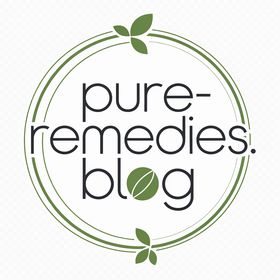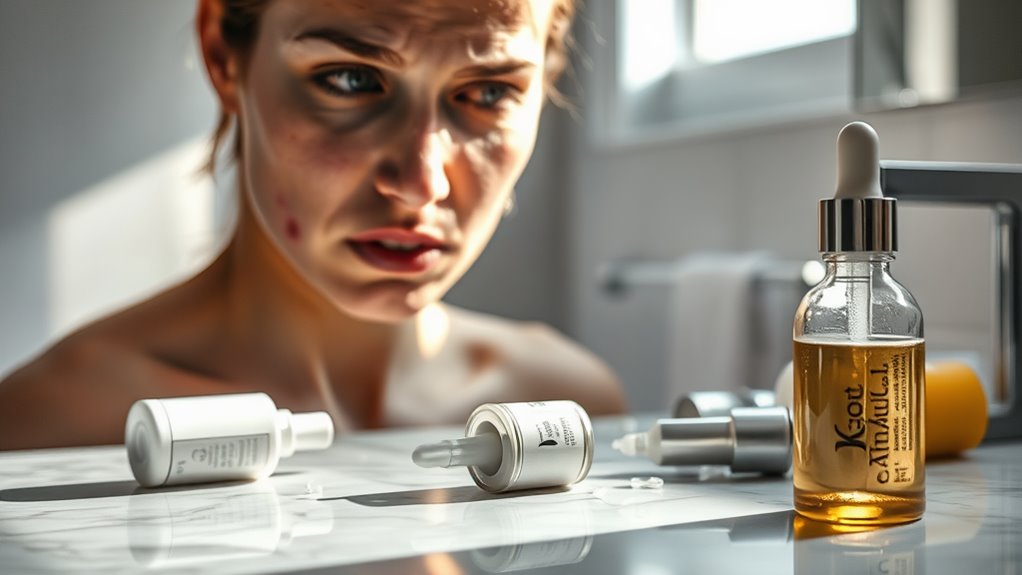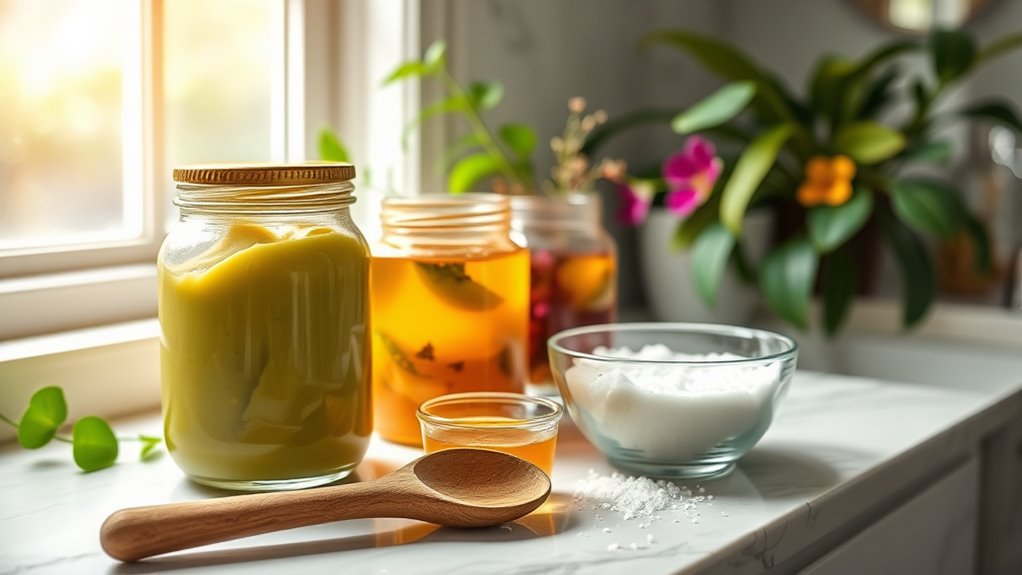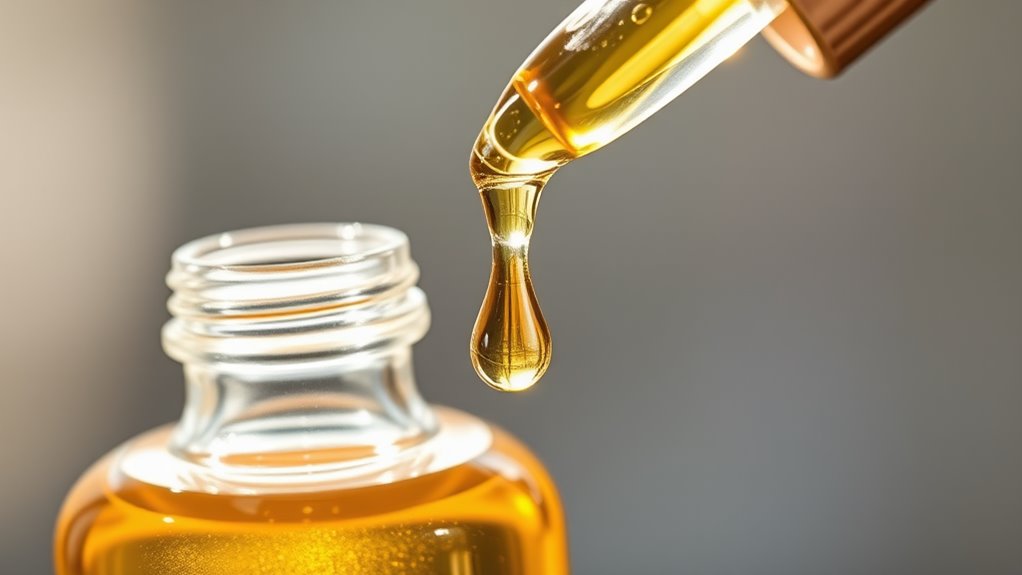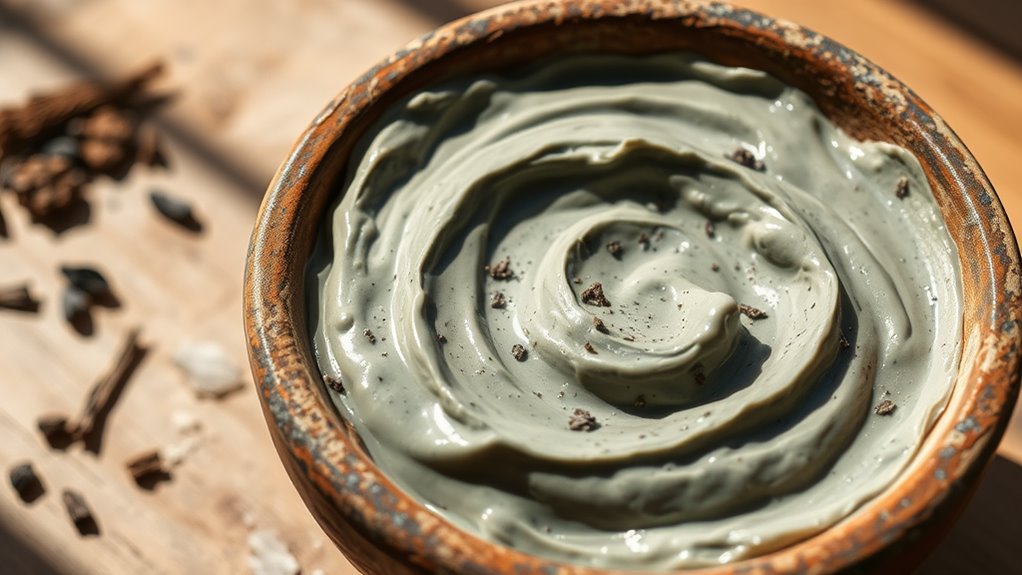Soothe Skin Naturally With This DIY Healing Balm!
You can create a simple DIY healing balm using beeswax for moisture retention and wound healing, coconut oil for its antimicrobial properties, and lavender essential oil to reduce inflammation. This natural blend soothes irritated skin, promotes hydration, and supports eczema relief through evidence-based plant extracts. It’s easy to prepare and apply for daily protection, while shea butter enhances collagen production for lasting benefits. Explore variations and tips ahead for tailored results.
Key Takeaways
- Create a DIY healing balm using natural ingredients like beeswax, coconut oil, and lavender oil for skin soothing.
- Melt beeswax in a double boiler, then mix in carrier oils and essential oils for even distribution.
- Natural components in the balm provide anti-inflammatory and moisturizing benefits to reduce irritation.
- Apply a small amount of the balm twice daily on clean skin to form a protective barrier.
- Customize the balm with additions like tea tree oil for antibacterial properties or aloe vera for extra hydration.
Essential Ingredients for the Balm
Creating your own healing balm starts with selecting key ingredients that provide therapeutic benefits. For your healing balm recipe, you’ll focus on evidence-based components that target skin repair. This approach is supported by scientific research on natural remedies for skin conditions.
Start with beeswax, a natural emollient that forms a protective barrier, as studies confirm its role in moisture retention and wound healing. Incorporate carrier oils like coconut oil, rich in lauric acid, which research shows exhibits antimicrobial properties to combat infections. Moreover, coconut oil offers eczema itch relief through its anti-inflammatory properties, as supported by scientific studies.
Essential oils such as lavender offer anti-inflammatory effects, with clinical trials demonstrating their efficacy in reducing skin irritation. Don’t overlook shea butter, whose fatty acids promote collagen production, supported by scientific evidence of its hydrating and anti-aging benefits.
Step-by-Step Preparation Guide
With these essential ingredients at hand, you’ll start by melting the beeswax in a double boiler over low heat, ensuring even distribution for optimal texture and moisture-locking properties, as supported by studies on its formulation stability. Additionally, incorporating natural elements from a homemade anti-aging cream can enhance the balm’s skin-rejuvenating effects.
Once melted, add carrier oils slowly while stirring continuously to achieve a uniform blend, preventing phase separation as indicated by emulsion research.
Maintain temperature below 60°C to preserve ingredient integrity, based on thermal stability analyses.
Remove from heat, incorporate essential oils if desired, and mix for another minute to ensure thorough integration.
Pour the mixture into clean containers and let it cool at room temperature for 1-2 hours, allowing solidification as per crystallization kinetics, resulting in a stable balm ready for use.
This healing balm can also act as an overnight home remedy to help reduce acne-related inflammation and redness by morning, making it a safe DIY option for skin soothing.
Benefits of Using Natural Components
Natural ingredients in your DIY healing balm provide safer, more effective alternatives to synthetic options, drawing on extensive research that highlights their reduced risk of irritation and enhanced bioavailability.
For example, plant-based extracts like aloe vera exhibit proven anti-inflammatory effects, as demonstrated in clinical studies that show significant reductions in skin redness and swelling. You’ll experience improved healing because these components deliver antioxidants directly to cells, enhancing tissue repair more efficiently than synthetic analogs.
Research from dermatology journals confirms that natural oils, such as coconut or jojoba, offer superior moisture retention and barrier protection, minimizing transepidermal water loss.
By incorporating step-by-step application methods from this remedy, you can optimize the delivery of these natural ingredients for faster eczema relief.
Embracing these natural solutions not only aids in immediate relief but also supports preventive measures against future eczema flare-ups.
Application Tips for Optimal Results
To maximize the benefits of your DIY healing balm, apply a pea-sized amount to clean, dry skin and gently massage it in using circular motions. This technique enhances ingredient penetration, as studies show that massage improves blood flow and absorption rates, reducing inflammation more effectively. For enhanced results on acne-prone skin, consider incorporating elements from a natural face mask recipe to target scar healing.
Apply twice daily—morning and evening—for optimal results, allowing the balm to form a protective barrier without overwhelming the skin.
Store your balm in a cool, dark place to preserve its natural antioxidants, which degrade under heat or light exposure.
If irritation occurs, discontinue use and consult a dermatologist; patch testing first minimizes risks.
Monitor your skin’s response over a week, noting improvements in hydration and healing, backed by evidence from natural remedy research.
Always wash hands before application to prevent contamination.
Incorporating kitchen ingredients as detailed in our guide can make this balm a cost-effective alternative to commercial products.
Variations and Customizations to Try
While your basic DIY healing balm offers a reliable base, you can adapt it by incorporating evidence-backed ingredients to suit individual needs. For instance, studies show lavender oil reduces inflammation, while tea tree oil fights bacteria, as per dermatological research. Experiment with these customizations to address specific skin concerns like dryness or irritation. Additionally, frankincense oil offers anti-aging benefits as supported by research on its therapeutic properties.
| Ingredient | Evidence-Based Benefit | Customization Tip |
|---|---|---|
| Lavender Oil | Reduces inflammation (Journal of Ethnopharmacology) | Add 5-10 drops for sensitive skin. |
| Tea Tree Oil | Antibacterial properties (Clinical Microbiology Reviews) | Mix 2-5 drops for acne-prone areas. |
| Aloe Vera Gel | Soothes burns and hydrates (Phytotherapy Research) | Incorporate 1 tbsp for enhanced moisture. |
These tweaks enhance efficacy, ensuring your balm aligns with scientific findings for optimal results. Additionally, these customizations can support youthful skin by incorporating natural anti-aging elements like essential oils and DIY remedies into your routine.
